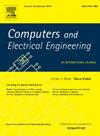基于光伏馈电多输出降压转换器的可再生能源储能系统,具有延长锂离子电池寿命的扩展电流控制功能
IF 4
3区 计算机科学
Q1 COMPUTER SCIENCE, HARDWARE & ARCHITECTURE
引用次数: 0
摘要
最近,有关提高光伏(PV)储能系统(ESS)中使用的储能设备循环寿命的研究明显加强。与现有的电池技术相比,锂离子(Li-ion)电池具有高能量密度和高循环寿命等优点。然而,现有的许多混合能源存储系统(HESS)都存在锂离子电池循环寿命有限、日历和循环老化等问题。因此,人们开始关注必要的充电技术,以通过延长锂离子电池的循环寿命和减少容量损失来提高其使用寿命。其中一种方法是通过从某一水平逐渐增加电流的方式为电池充电,而不是直接以最大充电电流启动充电过程。本研究提出了扩展电流控制(ECC),以减少电池容量损耗,延长光伏供电 HESS 的使用寿命。光伏模块的最大功率点 (MPP) 由 Perturb and observe (P&O) 算法通过超级电容器 (SC) 转换器提供,而 ECC 则通过电池转换器执行。与基于优化、规则或滤波的技术不同,这种方法所需的硬件较少。在大面积范围内控制电池电流可保护电池组免受充电开始时的大电流影响,并通过延长循环寿命减少容量损失。与仅包含电池组的光伏供电 ESS 相比,所提出的技术可将电池充电电流提高 40%,将达到 MPP 点的转换器占空比提高 8%,将电池容量衰减提高 31.69%。本文章由计算机程序翻译,如有差异,请以英文原文为准。
PV-fed multi-output buck converter-based renewable energy storage system with extended current control for lifetime extension of Li-ion batteries
Recently, there has been a visible intensification of research on increasing the cycle life of energy storage devices used in Photovoltaic (PV)-fed energy storage systems (ESS). Compared to existing battery technologies, Lithium-ion (Li-ion) batteries have advantages such as high energy density and high cycle life. However, many existing Hybrid energy storage system (HESS) suffers from the fact that Li-ion batteries have limited cycle life, calendar and cycle aging. Therefore, attention has shifted towards the charging techniques necessary to improve the service life of Li-ion batteries by increasing their cycle life and reducing capacity losses. One such approach is to charge the battery by gradually increasing it from a certain level, rather than starting the charging process directly with the maximum charging current. This study proposes Extended Current Control (ECC) to reduce battery capacity losses and extend service life in PV-fed HESSs. The maximum power point (MPP) of the PV module is provided by the Perturb and observe (P&O) algorithm via the supercapacitor (SC) converter, while ECC is performed via the battery converter. This approach requires less hardware, unlike optimization, rule, or filtering based techniques. Controlling the battery current over a large area protects the battery packs from high currents at the start of charge and reduces capacity losses by increasing cycle life. Compared to PV-fed ESS containing only battery packs, the proposed technique provides a 40 % improvement in battery charging current, an 8 % improvement in the converter duty ratio in reaching the MPP point, and a 31.69 % improvement in battery capacity fades.
求助全文
通过发布文献求助,成功后即可免费获取论文全文。
去求助
来源期刊

Computers & Electrical Engineering
工程技术-工程:电子与电气
CiteScore
9.20
自引率
7.00%
发文量
661
审稿时长
47 days
期刊介绍:
The impact of computers has nowhere been more revolutionary than in electrical engineering. The design, analysis, and operation of electrical and electronic systems are now dominated by computers, a transformation that has been motivated by the natural ease of interface between computers and electrical systems, and the promise of spectacular improvements in speed and efficiency.
Published since 1973, Computers & Electrical Engineering provides rapid publication of topical research into the integration of computer technology and computational techniques with electrical and electronic systems. The journal publishes papers featuring novel implementations of computers and computational techniques in areas like signal and image processing, high-performance computing, parallel processing, and communications. Special attention will be paid to papers describing innovative architectures, algorithms, and software tools.
 求助内容:
求助内容: 应助结果提醒方式:
应助结果提醒方式:


